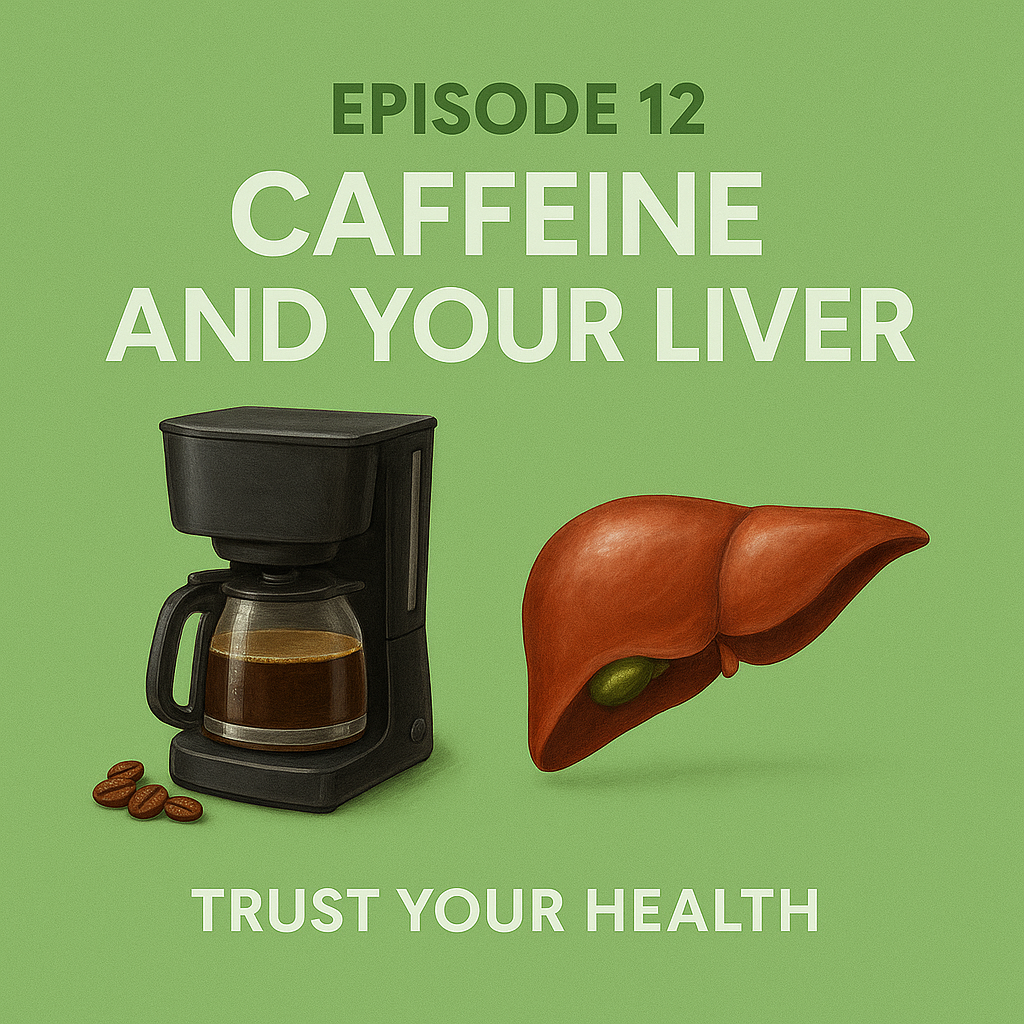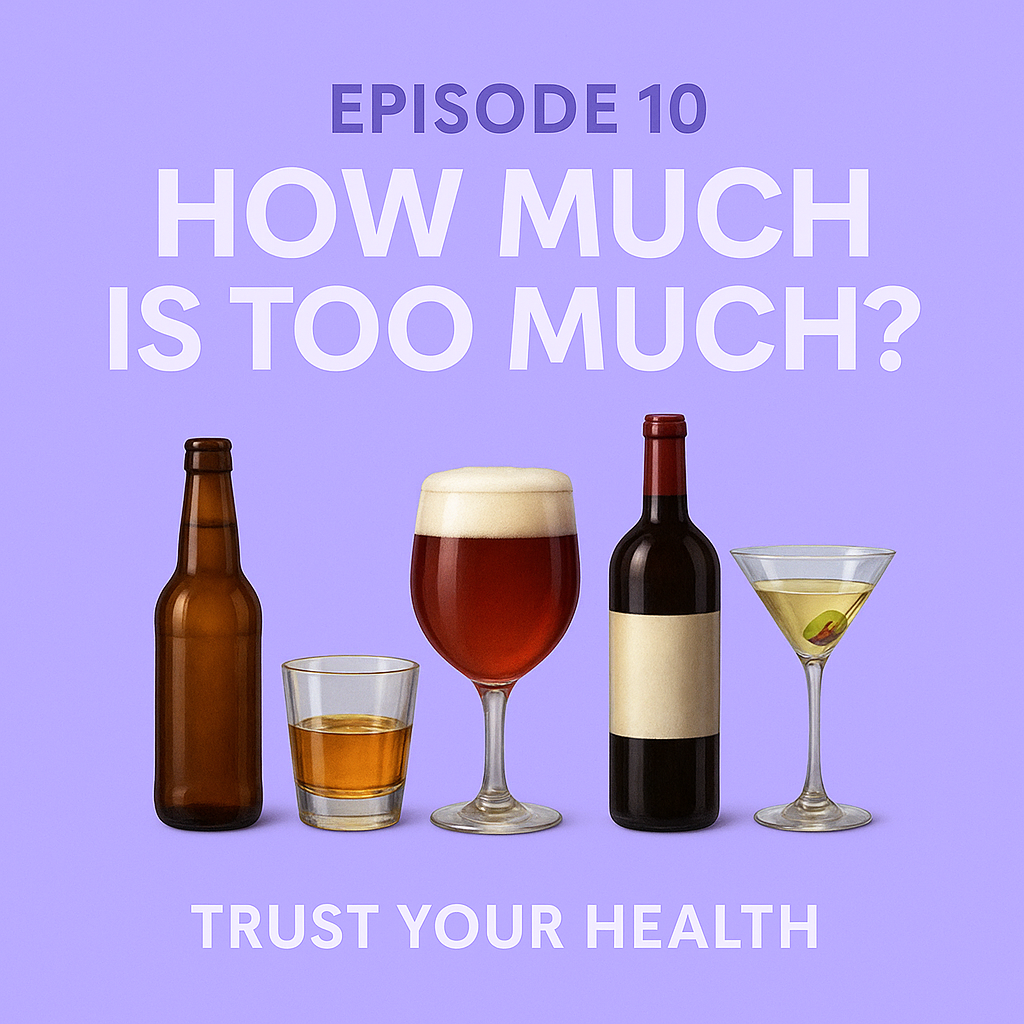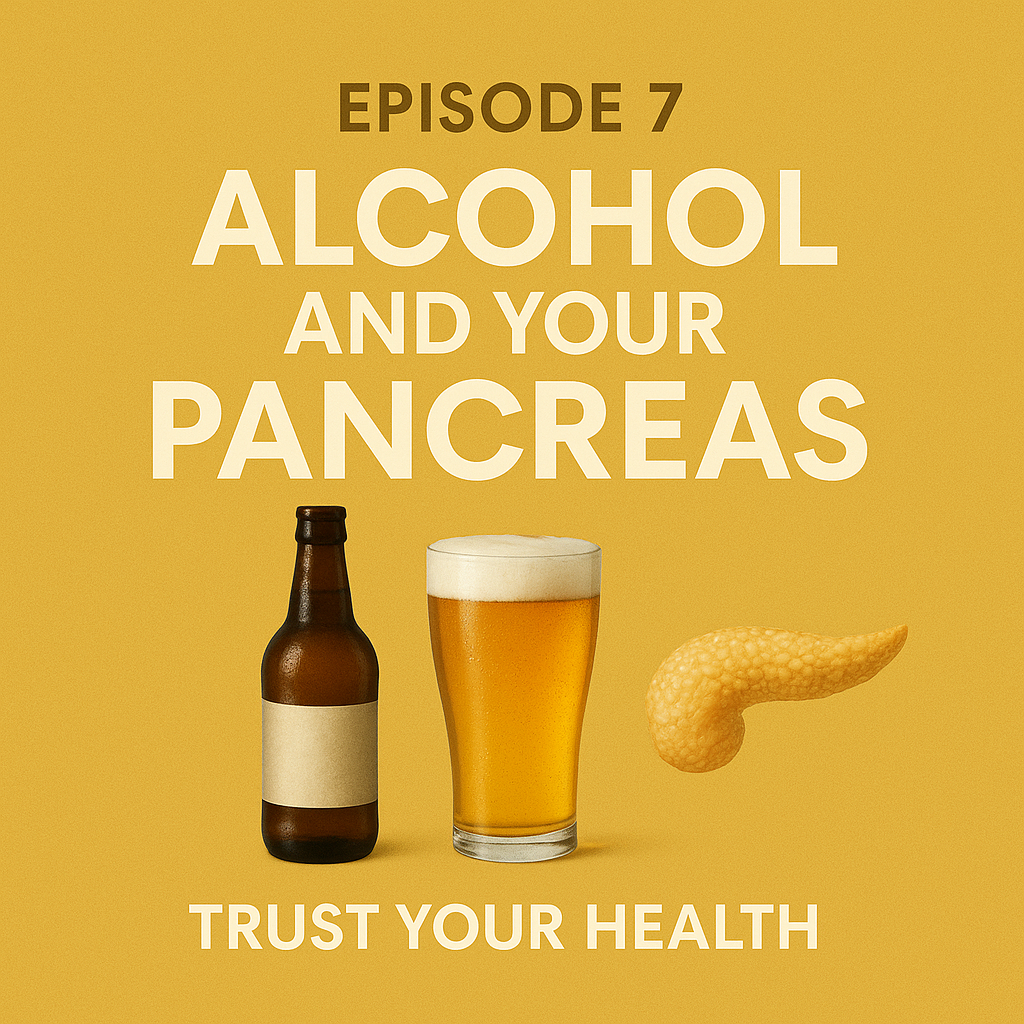Episode Transcript
Your liver is the quiet workhorse of your body. Every day, it filters and processes everything you take in — food, medicine, toxins, and yes… alcohol.
But when you drink, even just one or two drinks, your liver has to work overtime. And over time, that extra work adds up — sometimes in ways you can’t see, at least not right away.
In this episode of Trust Your Health, we’re kicking off our alcohol series by focusing on the organ that takes the biggest hit: your liver.
Let’s talk about what really happens when you drink — what’s normal, what’s harmful, and how to know if your liver is sending you warning signs.
When you drink alcohol, your stomach and intestines absorb it almost immediately into your blood. From there, it travels straight to your liver — because it’s your liver’s job to neutralize it.
Your liver produces an enzyme called alcohol dehydrogenase, which breaks alcohol down into acetaldehyde — a toxic intermediate — and then into water and carbon dioxide that your body can eliminate.
But here’s the catch: your liver can only process about one standard drink per hour. If you drink more than that, alcohol stays in your blood longer — and the extra workload starts to damage liver cells.
Over time, this can lead to something called fatty liver disease — where fat builds up in the liver, making it less efficient. The scary part is, fatty liver often has no obvious symptoms at first. Some people feel more tired, notice mild discomfort on the right side of their abdomen, or their blood tests show slightly elevated liver enzymes.
If drinking continues, fatty liver can progress to alcoholic hepatitis, which is inflammation of the liver. Symptoms here can include yellowing of the skin or eyes, called jaundice, along with pain, nausea, and fever.
And in severe, long-term cases, the damage can become permanent — leading to cirrhosis, which is scarring of the liver tissue. Cirrhosis is serious and can lead to liver failure, requiring a transplant.
Now you might be wondering — how much alcohol does it take to get there? The answer is: it depends. Some people develop fatty liver even at two to three drinks a day over years. Others develop hepatitis and cirrhosis more quickly. Factors like weight, diet, genetics, and other medical conditions matter.
If you’re curious where you stand, doctors use blood tests — looking at liver enzymes like ALT and AST — and sometimes an ultrasound to check for fatty liver. If you’ve been drinking regularly, even socially, it’s worth asking your doctor about these tests.
You’ve probably also heard about “liver cleanses” or “detox teas” that promise to undo damage. Unfortunately, most of those are marketing myths. The liver doesn’t need a special cleanse — it needs time away from alcohol to heal itself. The good news is, the liver is one of the few organs in your body that can regenerate if you give it the chance.
So what can you actually do? Start by cutting back. Even two alcohol-free days a week helps. Focus on staying within recommended limits — that’s up to one drink a day for women and up to two for men. And if you already have signs of liver stress, talk to your doctor about stopping alcohol completely while your liver recovers.
So next time you pour a drink, remember: your liver is doing all the heavy lifting. And while it can handle a lot — it can’t handle everything.
Thanks for listening to Trust Your Health. Because trusting your health begins by understanding your body.
Be sure to follow the podcast so whenever you need clear, honest advice about your body, we’ll be here to help you make sense of it.


